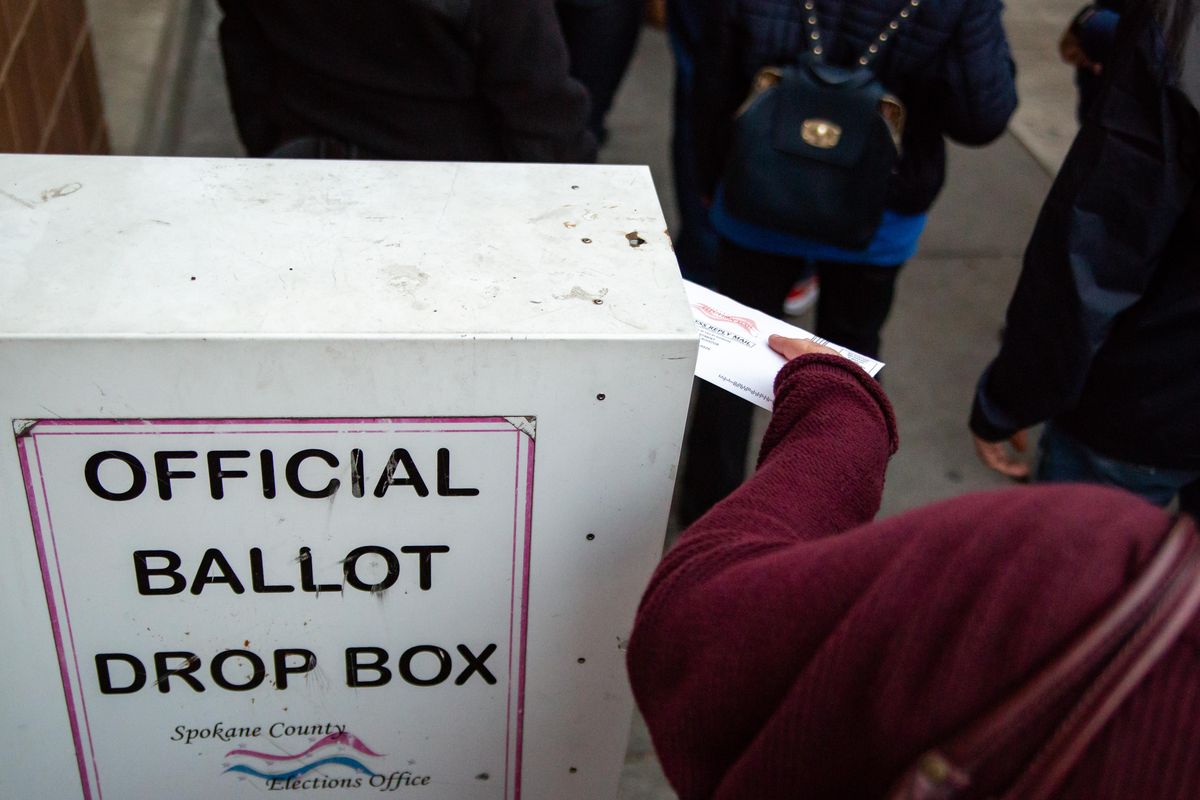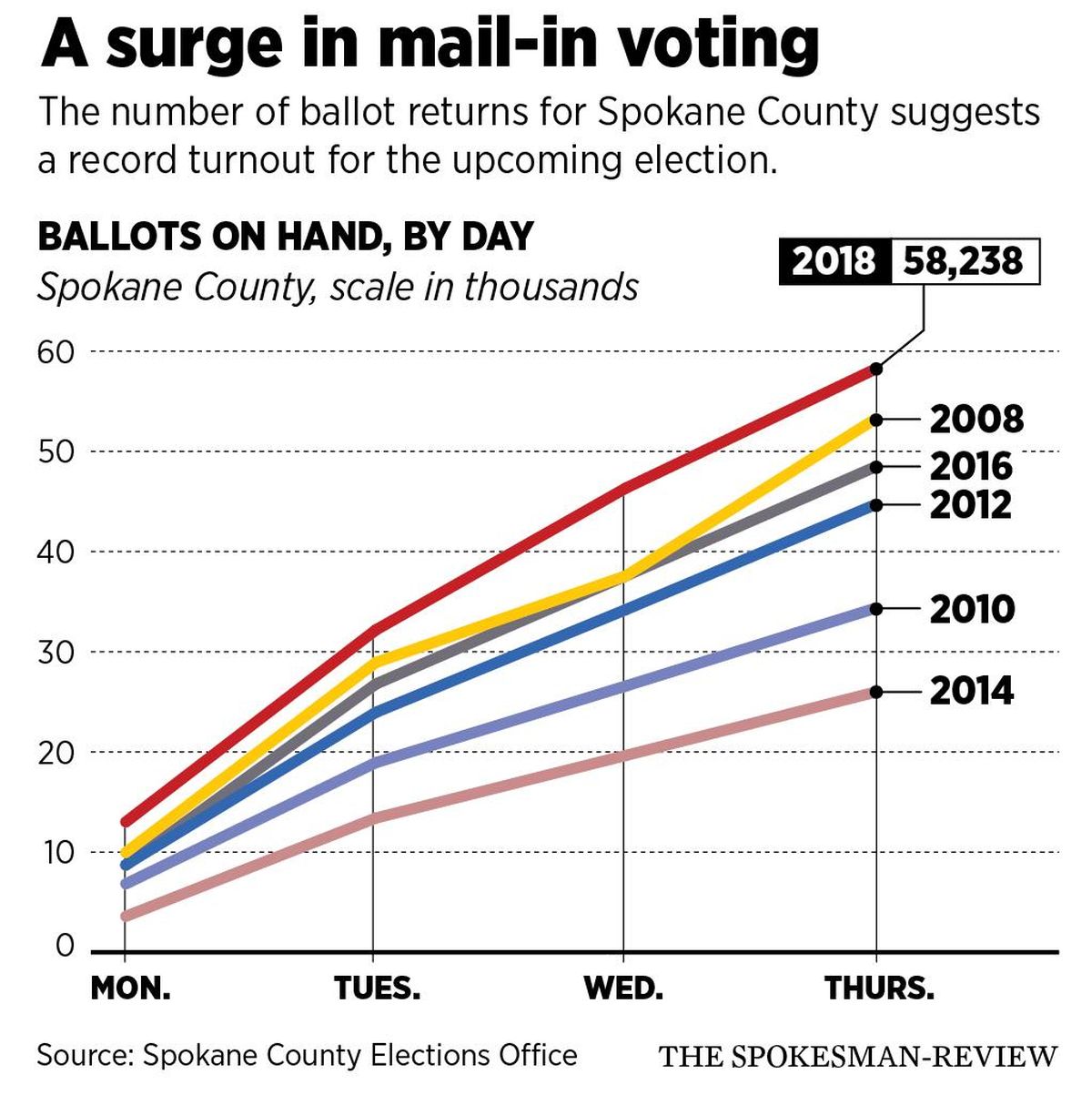Spokane voting heavy in early balloting
A voter casts her ballot on Oct. 22, 2018 at the downtown Spokane Public Library. (Libby Kamrowski / The Spokesman-Review)Buy a print of this photo
Spokane County voters are sending in their general election ballots in record numbers, far ahead of previous midterm elections and even ahead of 2008, when the county set a modern-day record for turnout.
Whether that’s good news for Democratic challengers like congressional candidate Lisa Brown or Republican incumbents like Rep. Cathy McMorris Rodgers remains to be seen.
“This would suggest a wave election,” said Cornell Clayton, director of the Thomas S. Foley Institute of Public Policy and Public Service at Washington State University.
Wave elections tend to favor candidates from the party other than the president, Clayton said, and that would be Democrats like Brown. But there are more Republican voters overall in Eastern Washington.
The 58,238 ballots received by Thursday afternoon represent more than 18 percent of those mailed to county voters last week.
Earlier in the day, when Spokane County was reporting nearly 15 percent of its ballots based on Wednesday’s deliveries, it had one of the highest turnout percentages in Washington. The secretary of state’s office released reports from each county that showed the statewide average at about 10 percent.
Spokane County turnout is strong across Republican legislative districts that cover suburban and rural areas, as well as in the Democratic stronghold of the 3rd District in the city of Spokane’s core.
Spokane is the most populous of the 10 counties in Eastern Washington’s 5th Congressional District. Three other counties also have turnout above the state’s average, while six are below it.
At this rate, Spokane County at least could easily set a record for midterm elections, which typically resulted in a drop-off of 40,000 to 60,000 votes from the previous presidential election in recent years. It also is more ballots received 12 days before the election than in 2008, when turnout hit 85 percent, or the 2016 election, when the county record of more than 239,000 ballots were cast.
The numbers could be boosted in part by the state’s decision earlier this year to pay for the return postage for ballots in Washington’s all-mail election system. But it may also be a reflection of a hotly contested congressional race, competitive races for other offices and controversial ballot measures.
The party that holds the White House typically loses seats in Congress in the midterm. Two years after Bill Clinton was elected, Republicans had a wave election in 1994 that allowed them to regain control of Congress for the first time in 40 years and oust six of Washington’s sitting Democratic House members, including Foley, who was House speaker. Democrats regained control of the House in the 2006 after George W. Bush’s re-election. Republicans got it back in 2010 after Barack Obama’s election in 2008.
Predictions of an election surge benefiting Democrats – the so-called blue wave – are based on President Donald Trump’s relatively low approval rating, the Democratic advantage in generic polls asking voters which party they prefer, and higher reported enthusiasm among Democrats, Clayton said.
But Republicans are trying to make a comeback, and Trump is “doing everything he can” to encourage that, he added.
“We’re in uncharted political waters,” Clayton said. “Things are incredibly polarized.”

